AIA South Dakota members, professional designers, exhibitors, and industry partners will gather Sept. 10-12 in Sioux Falls for the 2025 Annual Convention. To kick things off this year, we’ve moved our awards and recognition program to the front of the show. The Celebration of Architecture will do just that, showcasing the best in architectural design from AIA SD members and shining a spotlight on some of the people who are making meaningful contributions to the profession. Registration is open for all events. Click here to reserve your spot as an attendee or an exhibitor.
The AIA SD Design Awards competition is a highly anticipated component of the Annual Convention’s offerings. And we couldn’t do it—literally—without time and talent from our jurors. This year’s jury is from Substance Architecture in Des Moines, Iowa. Joshua Hemberger, AIA, and Leah Rudolphi, AIA, co-chair the jury, which is composed of a small group of colleagues from the 20-year-old practice.
We also couldn’t put together such a consistently strong and affordable Annual Convention without support from sponsors. We thank Raker Rhodes Engineering for sponsoring Josh and Leah’s keynote session on Thursday, Sept. 11, as well as South Dakota State University for sponsoring their travel arrangements.
We visited with Leah and Joshua—who also is a LEED Accredited Professional—for in-depth Q&As. We talked about their design sensibilities, valuable lessons learned across their careers, and even what they’d be doing if they weren’t architects (you’ll never guess). Of course, we also asked them what they’re looking for in a Design Awards submittal, as they review nearly two dozen entries in three categories: Architecture: Large Project, Architecture: Small Project, and the 2025 Rolling Category: Master Planning & Community Design.
We also invited our jury co-chairs to tell us about how they helped Substance Architecture navigate through its recent ownership transition, which laid the groundwork for the firm’s next generation of leaders.
The full jury includes:
- Associate Principal Joshua Hemberger, AIA, LEED AP
- Associate Principal Leah Rudolphi, AIA
- Principal Matt Rodekamp, AIA, LEED AP
- Principal Tim Hickman, AIA, LEED AP
- Principal Todd Garner, AIA, LEED AP
- Associate Principal David Gosnell, AIA, LEED AP BD+C
- Associate Principal Kevin Wagner, AIA
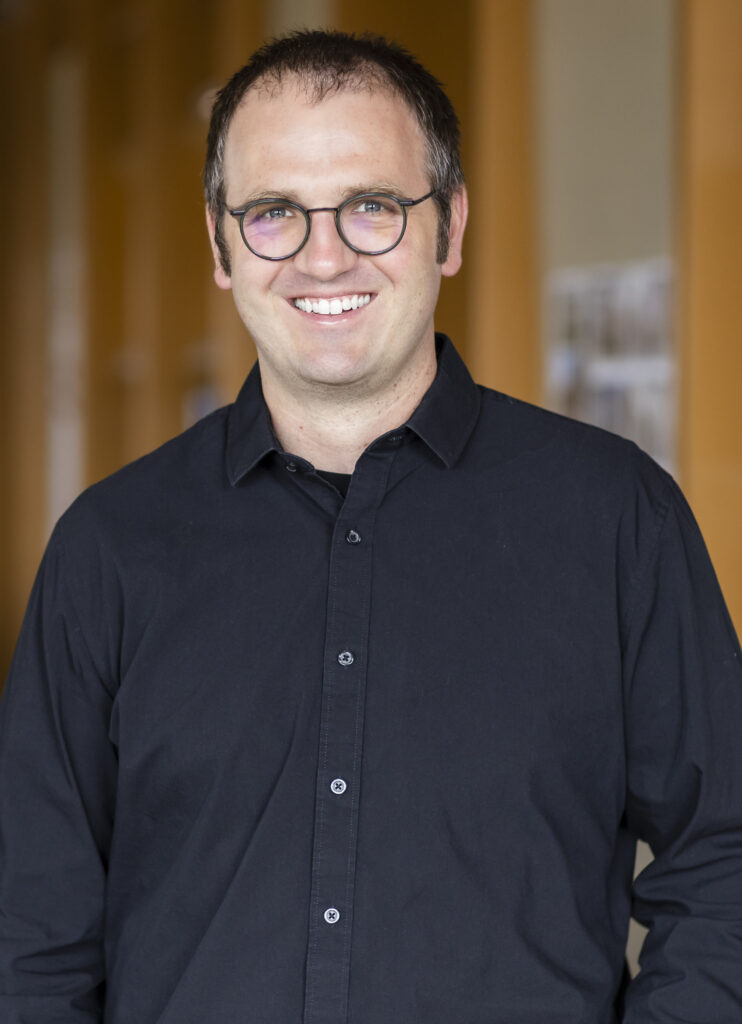
Joshua Hemberger, AIA, is an Associate Principal and Owner at Substance Architecture in Des Moines, Iowa. Since 2019, he has been involved with projects focused on racial justice, wellness, agriculture, and education to create equitable opportunities. Joshua, who also is a LEED Accredited Professional, worked with the Rapid City-based NDN Collective and Makoce Agriculture Development on the Pine Ridge Reservation. He is a graduate of Iowa State University who began his career in Kansas City before returning to his home state of Iowa.
Q: What’s the most valuable architectural knowledge you’ve learned on the job?
A: I think we’ve been trained to possess a body of skills and the ability to create space and buildings. But the most important thing I’ve learned is that your ideas are only good if the client agrees they’re good. Listen to your clients and what’s important to them. You might have the best idea, but if they don’t like it, it won’t go anywhere. As a young architect, I got frustrated when the client’s ideas trumped what I thought was the right approach. Over the years and through maturing, I realized you have to bring them along. You’re doing this for them, and you have to find a way to do great design that supports what they need and how they want it to work. We find a way to refine their ideas into the design of space.
Leah Rudolphi, AIA, is an Associate Principal and Owner at Substance Architecture in Des Moines, Iowa. She integrates her background in psychology and neuroscience within the design process, crafting multisensory spaces that resonate deeply with those who inhabit them. In 2022, she was the recipient of AIA Iowa’s Young Architect Award. Leah earned her psychology degree from the University of Iowa and her architecture degree from Iowa State University, where she also completed post-graduate coursework.
Q: What do you hope to gain from this time we’ll have together at the Convention, and what do you hope you can bring for others?
A: Truthfully, I’m hoping to share our work with folks in South Dakota and have good conversations with people about what they’re doing. It’s always interesting to learn what’s going on in our part of the country. Hopefully, students who attend can see some of the variety in design that’s taking place in the Midwest. I hope we can show them the Midwest is a really good place to stay and contribute their time and talents. When I was just out of school, I went to the West Coast for a few years. I came back to the Midwest. I think that’s common, and it’s great to have adventures. But I hope people know this is a really strong place to have a career and a life.
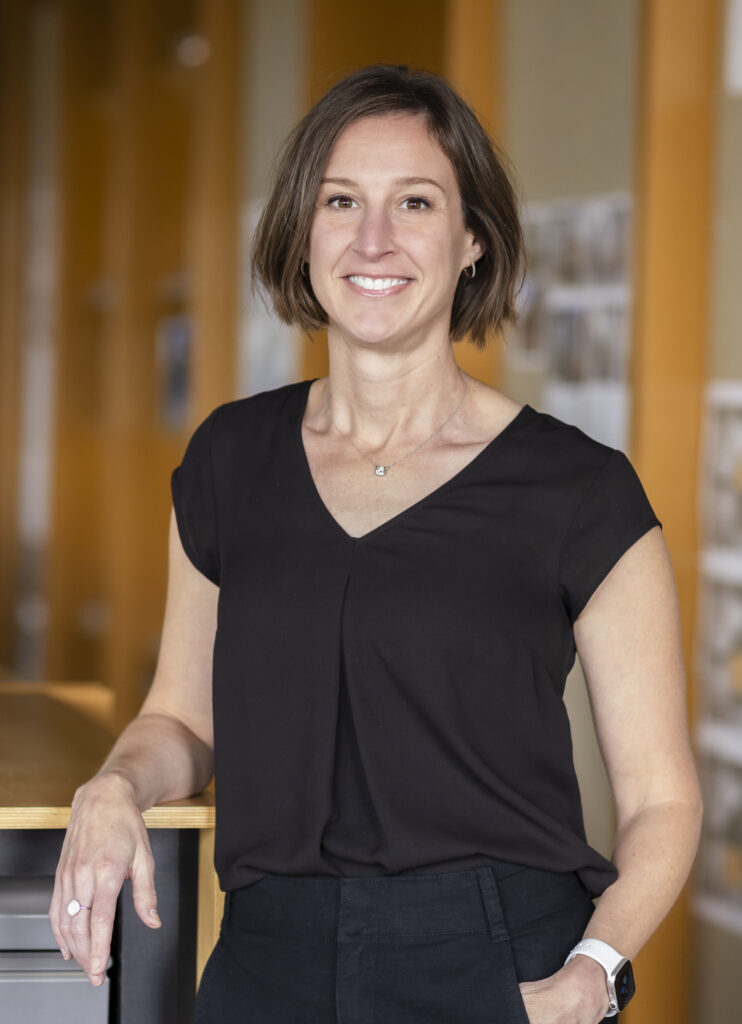
More from Joshua Hemberger
Q: What are some of your early design inspiration and influences?
A: My dad was my earliest influence. He started in architecture school at North Dakota State University. Three years in, he realized it wasn’t for him and he maybe wasn’t going to make it as an architect. He switched to become a mechanical engineer. He worked for John Deere his whole life. I remember growing up and going through his old drafting supplies from college, seeing the blueprints and work he did in college, and being fascinated with those things. He was also very hands-on and I grew up in his wood shop, building things with him and creating things out of odds and ends that were lying around. Those were some of my earliest memories. I, like many other architects, had my LEGO days, and they were a big part of my upbringing. Now, having those around for my kids is fantastic.
When I got into high school art, that aspect of drawing and creating things really had a huge impact on me. Architecture was the perfect mix of creativity and figuring things out. It’s the perfect mashup.
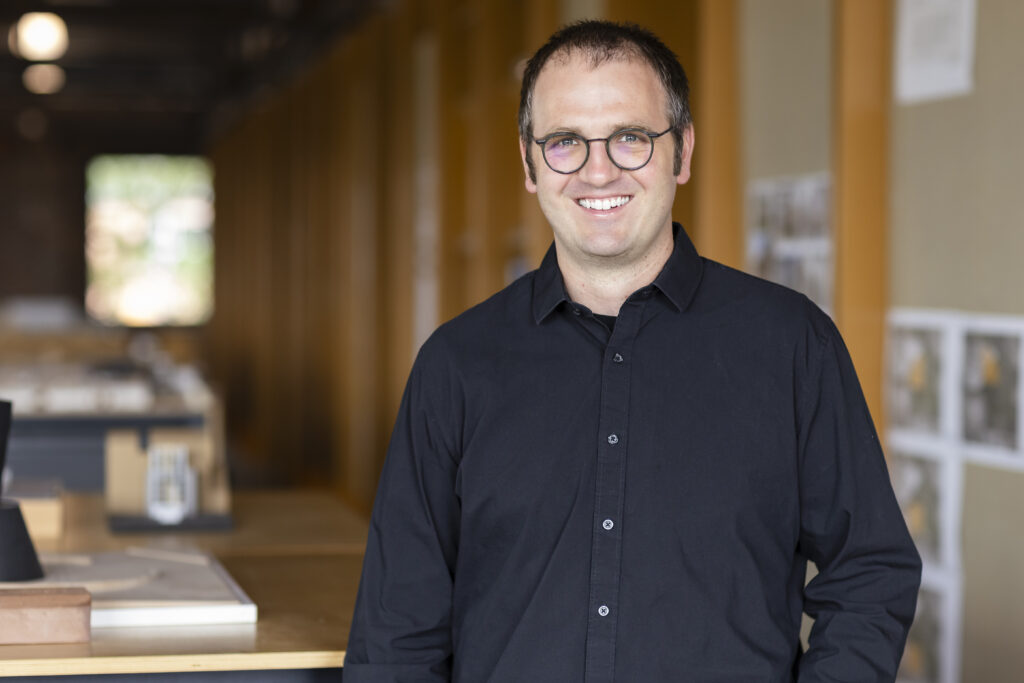
Q: What’s the most valuable nonarchitectural knowledge you bring with you to work each day?
A: We have a great profession. I have fun doing it. I love coming to work and doing what we do. I also have a very positive attitude and look at the bright side. The days I’m bummed out, the team here knows it’s something big. But it doesn’t happen very often.
Q: How do you sum up what’s most rewarding for you about your work?
A: I love going to the grand openings or coming back to a building after the client has moved in and they’ve been using it. The most rewarding thing is seeing a client talk about the design and explain in their words how and why it was done. It’s seeing them latch on to that piece of architecture that’s theirs or that they get to work in on a daily basis. Early in my career, I got to work on a main studio space for the Kansas City Ballet. I had to get in at the one-year warranty for some reason, and I saw the men’s dressing room. Nothing was great about it. It didn’t match anything we’d drawn up for where things went. But I got to see the space being used, their claiming it as their own and just celebrating it.
Q: How do you celebrate that kind of creativity at home with your kids, when you’ve stepped on the umpteenth LEGO on the floor?
A: Well, they do have a spot for the LEGOs and they can do whatever there. We have one paint color in my house, and it’s extra-white. It’s unfortunately a canvas, right? My kids are 10, 7, and 5. We try to keep the art to paper but also live with them writing on the house and very much encourage making forts and other creative play. If they do something on a piece of paper, they can tape it up wherever.
Q: What would you be doing if you weren’t an architect?
A: I’d be a golf pro. That’s the one that didn’t work out. I played golf all through high school, and I tried out for Iowa State’s golf team my freshman year. I got through the first round and asked my studio professor, “I’ve got a second round of tryouts at the same time as studio. Is it OK if I miss?” She looked and me and said, “You need to decide if you’re going to do architecture or golf.” That was a decision point. I would have worked at local course and taught lessons. I love the technical aspects of the game—understanding the golf swing. It still tweaks my brain the same way as architecture, the problem-solving and creativity in how I’m going to get to the green. There are similarities there for me.
We want to be able to understand the project: what the project was, the goals, the problems they’re trying to solve. We want to see that one, clear approach.
Q: Have you developed a personal stamp for your projects?
A: I always look for opportunities to connect the inside of a building to the outside. Having that natural connection—whether it’s great views at key moments within that building, the ability to bring in daylight to fill the volume in a unique way, or rooms that bleed out into great outdoor spaces. I’m always looking to do that in any way possible. If anything, thinking about that is my first priority. Of course, you also can do it through materials or bringing in textural qualities.
Q: How do you apply all that design experience and knowledge when evaluating submittals as a juror?
A: We want to be able to understand the project: what the project was, the goals, the problems they’re trying to solve. We want to see that one, clear approach. A concise idea about how the designers carried their idea through every aspect of the project—how the plan relates to that idea, the building sections, even selections for structural and mechanical systems. It all should support that main idea, from big picture down to the details.
Now, you don’t always get to have the idea to the extent you want it everywhere in the project. It’s hard to decide, “this area needs to be pretty basic; let’s focus our effort on one moment.” Even if it isn’t a glamorous project, you can see when someone makes a concerted effort to focus on what’s really important within the constraints of the budget or the site or whatever it might be. It’s harder to have that clear idea on bigger projects because there are so many parts and pieces. On small projects, it probably isn’t going to be something elaborate for 75 percent of the work, but it’s good as long as you get the 25 percent really right. The scale helps you refine the idea. For me, it’s seeing what the designers did and being able to tell where and maybe even how they made those decisions. We’re not judging style in a lot of cases. We’re judging execution: Did they carry it through?
Q: That said, what responsibility do you think jurors have in shaping the future of the profession?
A: I don’t think everything deserves to win an award. It’s about the process and about making yourself better—getting the feedback and hearing the opinion on how well jurors feel you executed. That’s what’s most valuable to me when we get feedback from jurors. Last year for our firm was frustrating because we did not win a single award at AIA Iowa’s Design Awards. But the jury had strong opinions on sustainability aspects and the design excellence categories defined by AIA. Those were the top priority. In our firm’s history we’ve always focused on performance and sustainability, but it wasn’t presented at the forefront of our submissions. It really made us reconsider our approach and how we presented that in submissions or on our website. Over the past year, we’ve made changes in how we talk about those things. Not winning anything was valuable to us because it made us better in how we talk about our projects and processes. That’s the role: to continue elevating architecture and what we do.
Q: What do you hope comes from our shared time together at the AIA SD Annual Convention?
A: We really look forward to being there and meeting everyone. We’re excited to share some of the things we’ve been working on, but we’re also excited to hear from all of you. We can learn from each other.
More from Leah Rudolphi
Q: What were some of your early design inspiration and influences?
A: My path toward architecture was not a straight line. I did an undergrad in psychology, and lot of that focused on clinical psychology and neuroscience—very science-based as opposed to a therapy track. I worked in psych units for a while at a hospital and in a lab doing research on Huntington’s disease. So I got some idea of what that career would look like. I also knew the likely path would be going back to school for a master’s degree. I spent a couple years working and decided it wasn’t for me. I wanted more creative pursuits. At that time, I didn’t have any family or friends who were designers or architects, but I had a science and math background as well as a fine arts minor in college, so I thought architecture would be a blend of those.
I went back to school as a graduate student, and everyone was coming in with all kinds of different experiences. I ended up really loving it. Through my first couple of jobs, I found out the practice of architecture is quite different from the schooling of architecture, which is an interesting aspect of our field. I ended up falling in love with architecture. I really like the variety of the kinds of projects and kinds of lives you get to jump into for a year or two or five when you’re working on a project. That’s an interesting part of it, too. Your friends will ask, “What are you working on?” And the answer is “Same thing.” But every day is different. You move through the different phases of design and construction for each project, and you also move through different stages of your life in the office and the world. As you get further along in your career, there’s more management and business. You don’t stay at a plateau very long.
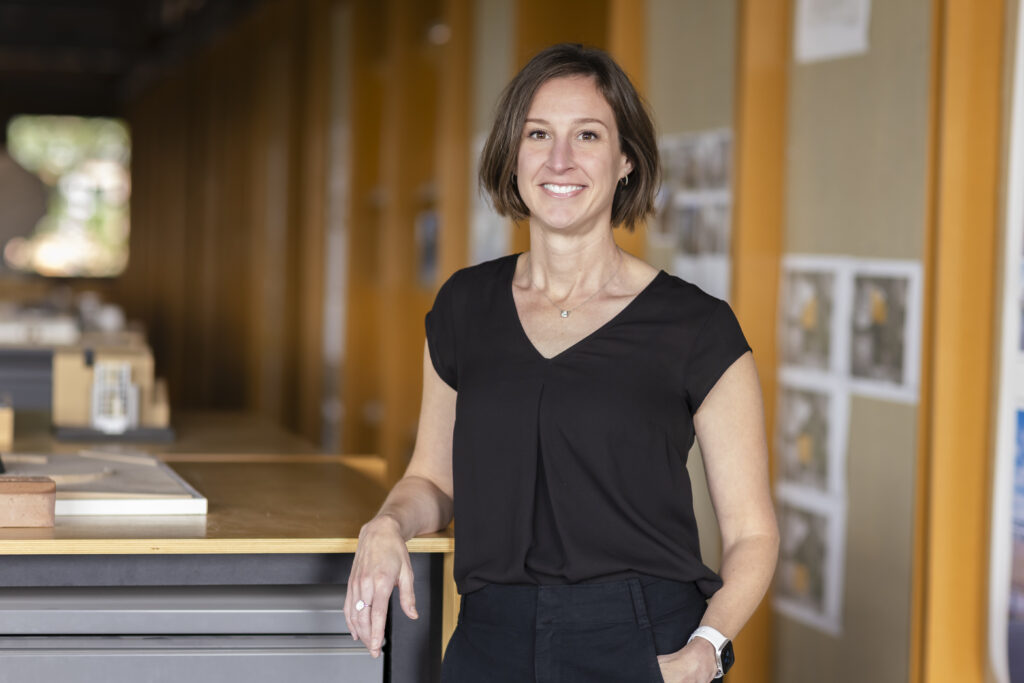
Q: What’s the most valuable architectural knowledge you’ve learned on the job?
A: I think it’s critical to keep in mind that this a service profession. This not about me and my ideas first. I’m not building something for myself. I’m not building it with my own money. We have to keep in mind what our role is. Of course we’ve got design aspirations for every job, and we want to do the best we can for our clients. But I think the quality of the relationship and the trust we build during that process is so crucial to the outcomes. I’ve learned that, really, just by watching other people who are more senior to me in my career. I think it’s so important to keep your ears and eyes open when you’re watching the technical aspects and how they truly get built on a jobsite. But it’s also how people talk to one another on the phone, how people send emails. All of those are critical to getting the best project out of this job—and to getting the next project, too. I’m more conscious of that as I move into the ownership role in my career.
I’ve also gotten some really good advice at the beginning of my career. One of my professors told me, “Do whatever you can to work for the best firms you can, early on. You need to imprint on those really good firms and with people who have a good work ethic.” If you have to take a job because you need a job, that’s fine. But make sure you’re looking to move to the best place you can be.
Q: What’s the most valuable nonarchitectural knowledge you bring with you to work each day?
I’m an enthusiastic amateur runner. I get together with a group of 5 to 10 people pretty much every morning. We run and race and train. It’s similar to architecture in that is a tireless pursuit of something. It’s day by day, working on a goal and being together with people who are doing something hard together. That forms bonds that are very similar to the bonds you form when you are in the office and grinding in the last couple of months leading up to some hard deadline. It’s really good for me to be around people who don’t do what I do (for work). It gives me a bigger perspective. Everybody’s jobs are hard in different ways.
I’m very proud of how we handled the ownership transition here. … People are making decisions on behalf of their families’ future. It’s sensitive stuff. I’m proud of the way we moved through that with one another.
Q: You talked earlier about seeking out good firms. As you move more into the ownership phase, how do you make sure Substance is that place?
A: It’s a really important question and one we’ve tried to improve on with more diligence than we have maybe have in the past. We’ve been around for 20 years now, and you need to get more streamlined and intentional. We want Substance to be a place where people want to build a career, and not just somewhere people will be for two or three years. We’ve set up mentorship programs where newer staff stays with a mentor for a year and then switches. We track their progress and have in-depth conversations about how that’s working. We try to give them exposure to different aspects of the practice so they get the full picture of what happens in the office. And then also what it looks like to be an architect in a community. We try to get people involved in AIA Iowa activities, the Iowa Architectural Foundation, and organizations for young people in the profession. We try to get them connected in those ways so their life as a designer isn’t just within our office, if they want a bigger life than that in the design community.
We try to do exciting, good work and that also means people are paying attention to what sometimes are considered the more mundane things. Those can be a really big deal. The coordination between a set of drawings and specifications can create a really wonderful design project. Without the right attention, it also can create a real mess when you get into construction. We try to help people see the truth of that old adage: How you do anything is how you do everything. And, you know, that a door hardware schedule matters.
Q: Given all that, what would you consider the most rewarding part of your work?
A: I’m very proud of the way we handled the ownership transition here. People have to make a lot of very personal decisions. There’s a lot of talk about money, and lawyers get involved. People are making decisions on behalf of their families’ future. It’s sensitive stuff. I’m proud of the way we moved through that with one another.
Our office also does a really good job on projects where people maybe are not expecting high design—transit projects, locker-room renovations. Really any time people know they need to do a project but they don’t know the impact that good design can have on everyday life. Maybe it’s a client who hasn’t done project after project. It’s a new process and there’s apprehension. Trust and a bit of faith need to happen between them and the design team. And then you see them get into their spaces and it honestly is transformative. Small moves and simple things really can make daily lives better. If you do it thoughtfully, it doesn’t have to be expensive. For example, I’m thinking about a project that I’ll talk about during the conference, for a company in a little town about an hour east of Des Moines. They make robotics for the dairy industry—automated milking machines and robots that zip around the dairy barns to push the hay and clean up after the cattle. We designed a headquarters for their office that also includes a training facility. Most of the people in that building are doing factory work, and they are used to not having any natural light, no access to the outdoors. And they’re usually not in contact with people who might work in the offices or in other areas. It’s almost stigmatized, that those factory-floor spaces aren’t treated with as much care. Their new building has skylights. It has views to the prairie landscape in every direction. They use air-powered tools so it’s a lot more quiet than a typical factory. They have better recruitment and retention, and it’s just a more pleasant place to work. Some of that was driven by the ethos of the company and some, we could contribute.
Q: What would you be doing if you weren’t an architect?
A: I would do something that was very small and focused, like a watchmaker or a jeweler. My fantasy jobs are ones you can focus on and then leave there when you go home.

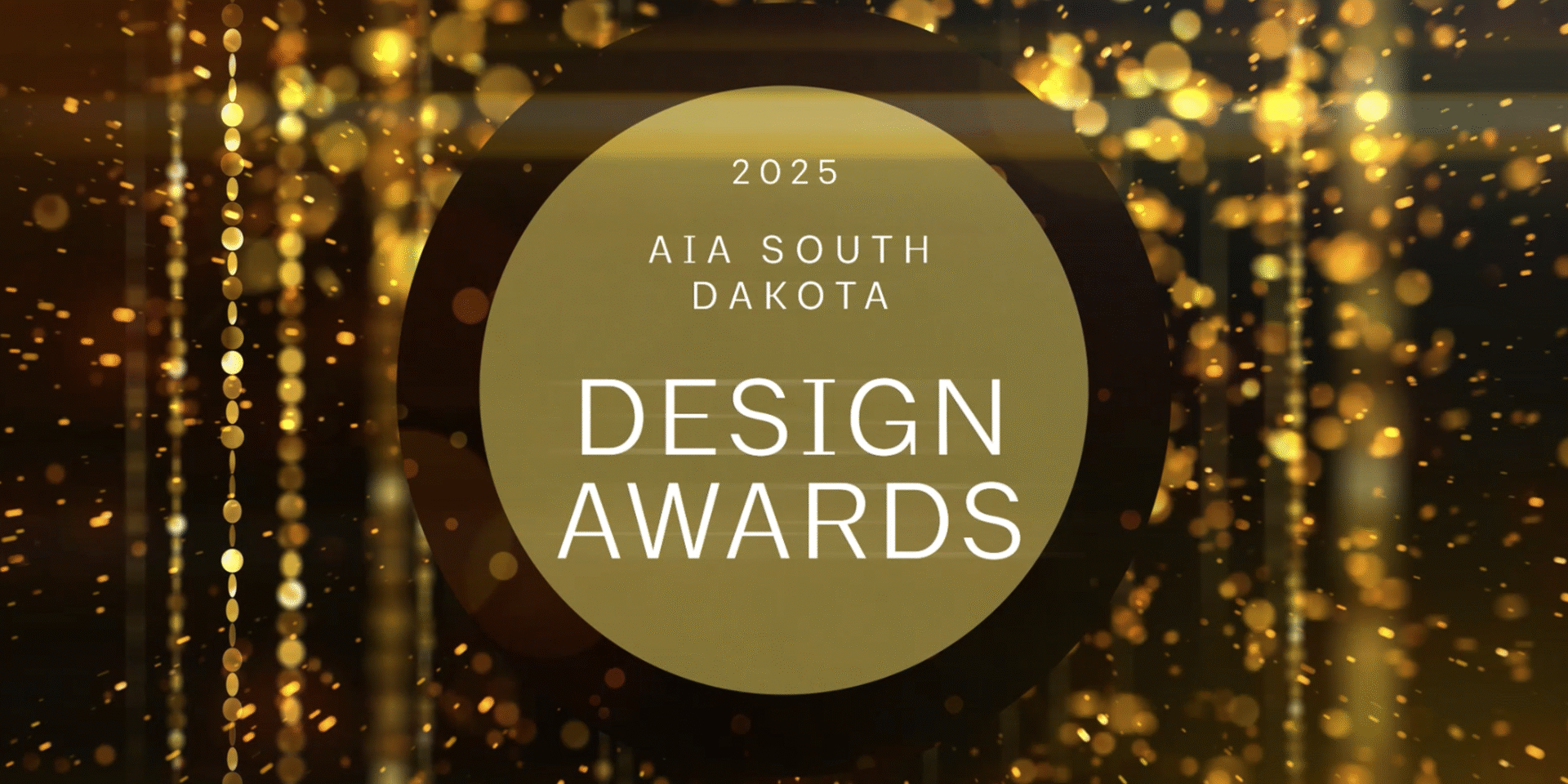






3 Comments